(826 products available)
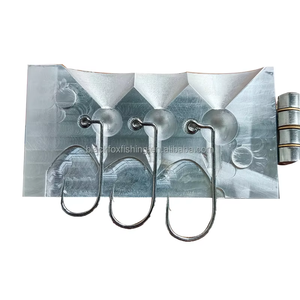

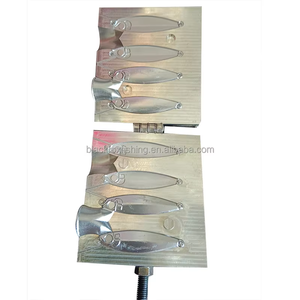
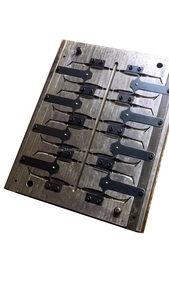

































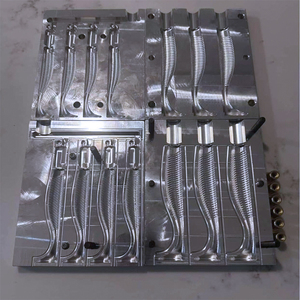




















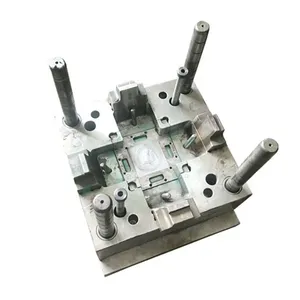


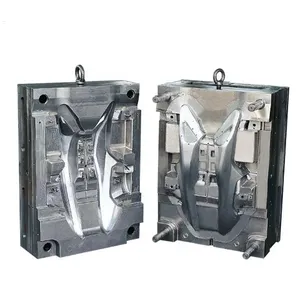





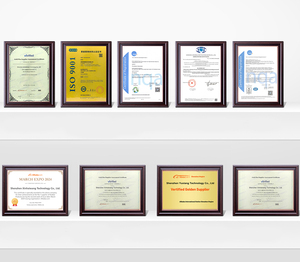
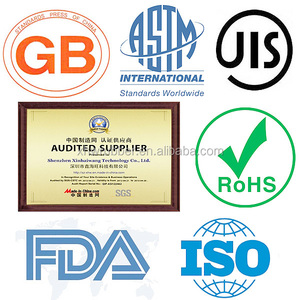


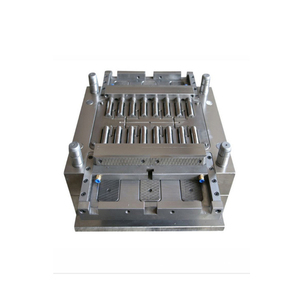
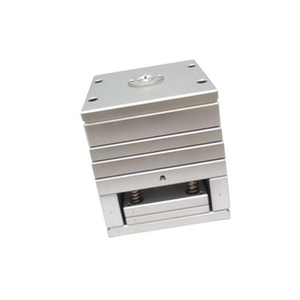


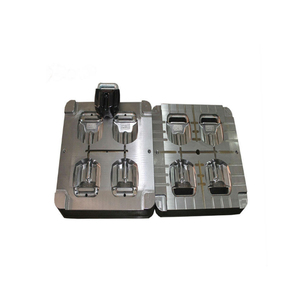

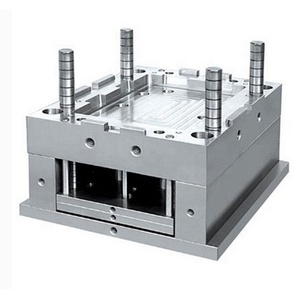







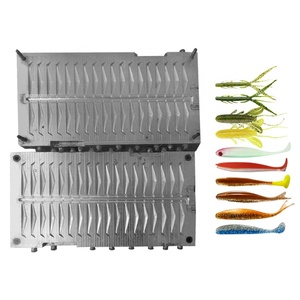
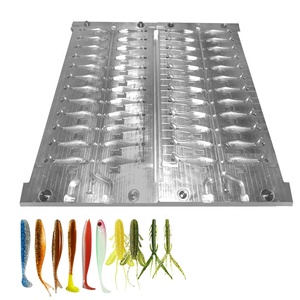





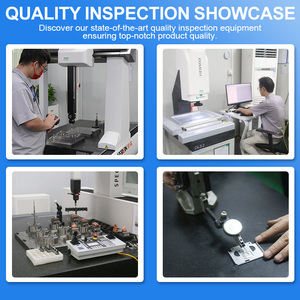














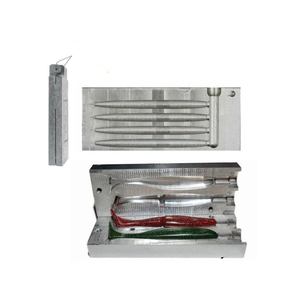

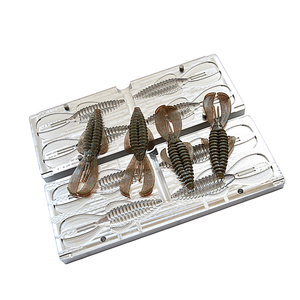




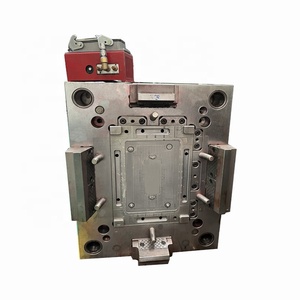






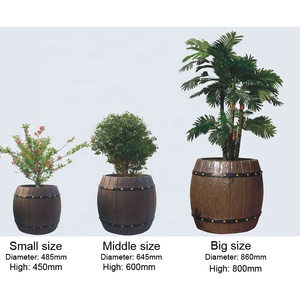
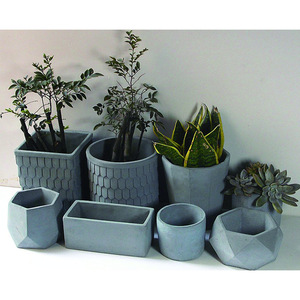











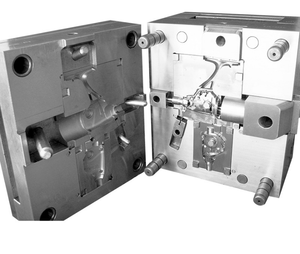











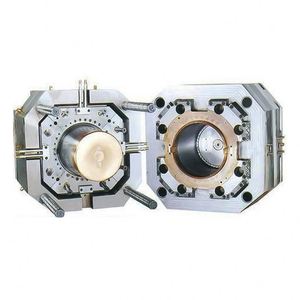







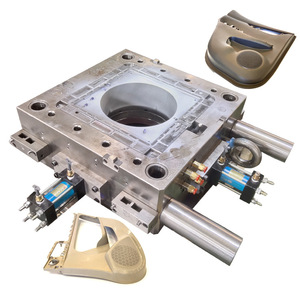

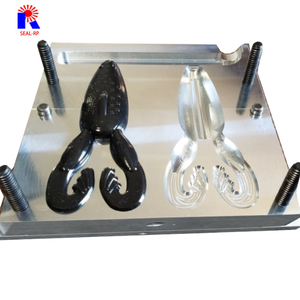







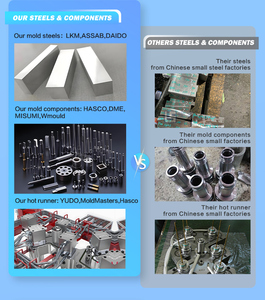
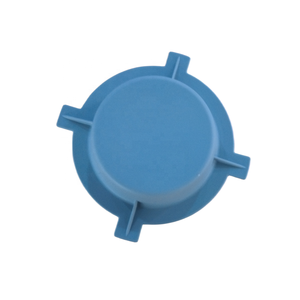


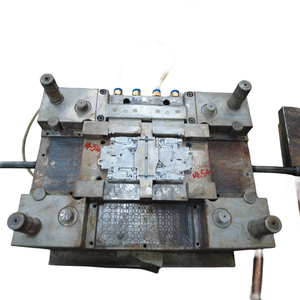
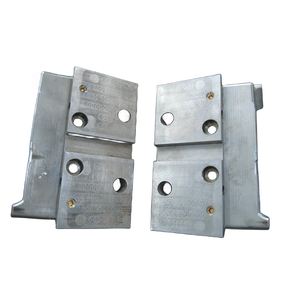


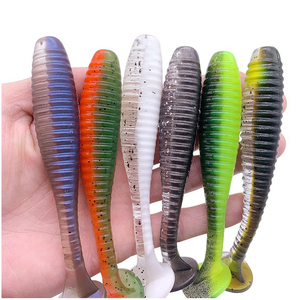
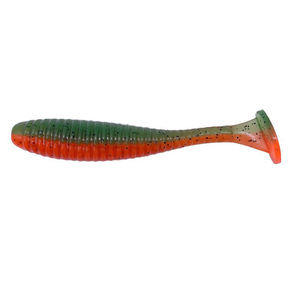
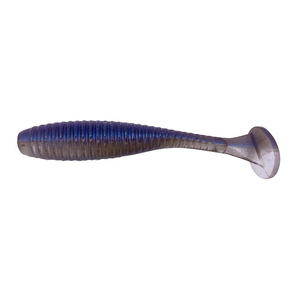







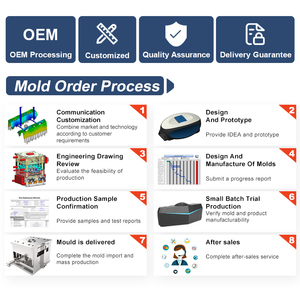
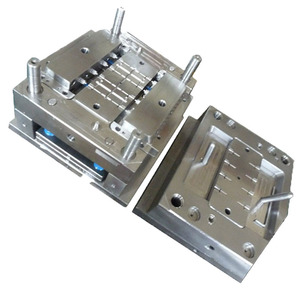
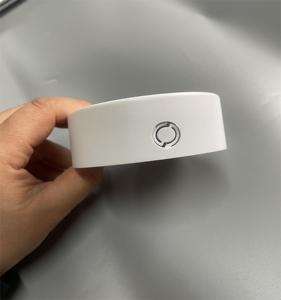

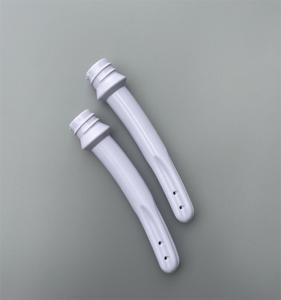


Many manufacturers use injection plastic fishing lure molds to produce different fishing lures. Each mold produces a unique plastic fishing lure. Here are the main types of injection plastic fishing lure molds.
Two-cavity molds
Two cavity injection fishing lure molds produce two identical fishing lures with each cycle. The molds have two cavities, which allow molten plastic to flow into two separate chambers. They also have a runner system that connects the injection unit to the cavities. Using a two-cavity mold increases production speed. Manufacturers get two lures in one cycle. The cycle time reduces by half compared to single-cavity molds. The two cavity mold is an economical option for small-scale fishing lure production.
Four cavity molds
The four cavity injection mold for fishing lures has four cavities. It produces four identical lures with each cycle. The mold works the same as the two-cavity mold. It only has four cavities instead of two. Using a four-cavity mold further increases production speed. It is suitable for large-scale fishing lure production. Although the initial cost of the four cavity mold is higher, it has a higher return on investment (ROI) when production volume is high.
Multi-cavity molds
Multi-cavity injection plastic fishing lure molds have more than four cavities. They can have up to 32 or more cavities. The molds produce a large number of fishing lures in each cycle. Businesses use multi-cavity molds for high-volume production. Although the molds are expensive, the cost per lure is lower. This is because the cycle time is significantly reduced. The lure maker can recover the costs quickly.
Core-back molds
Core-back injection fishing lure molds have a unique design. They have a core that can slide back to create a deep cavity. This allows the molten plastic to flow into intricate patterns. The core increases the strength of the lure. Core-back molds are ideal for producing durable and strong fishing lures.
Two-shot molds
Two-shot injection fishing lure molds create two different colors or materials in a single cycle. The mold has two cavities connected to one nozzle. It has shared runners and gates. The molten plastic from two nozzles flows into the same cavity. Using a two-shot mold produces a lure with unique features. For example, a hard body and soft tail.
Plastic fishing lure molds have many usage scenarios, including the following:
Bait Manufacturing Companies
Fishing lure molds are primarily used by lure manufacturers who produce soft plastic fishing lures for sale to anglers. These manufacturers use injection molders to create everything from crank baits to soft plastic grubs. Some manufacturers specialize in custom lures and use combination molds to create unique lure designs.
Custom Lure Creation
Fishing lure molds can also be used by individuals and small businesses who create custom lures for sale or personal use. These molds allow for the creation of one-of-a-kind lures with specific designs and actions to attract different types of fish. Some enthusiasts use CNC mold-making machines to create unique lure designs that are not available on the market.
Repair and Modification
Molds for fishing lures can be used to make repairs to damaged lures or modify existing ones. Anglers can reproduce a particular piece of a broken lure or change its design or action to make it more effective. For example, if a particular lure is a great fish catcher but the lip breaks, instead of buying a new one, the angler can use a mold to reproduce the lip and attach it back to the lure.
Bait and Tackle Shops
Some retail fishing bait and tackle shops use fishing lure molds to create soft plastic fishing lures for sale to anglers. Some shops do this as a value-added service to their customers, while others do it to generate additional revenue.
Fishing Guide Services
Some fishing guide services use fishing lure molds to make lures to sell to their clients. The main aim of doing this is to help clients achieve great fishing results. Making plastic lures can also be a fun activity for clients.
Fishing Schools and Workshops
Many fishing schools and workshops use fishing lure molds to teach students how to make lures. The instructors also use the opportunity to teach students about the different types of lures and their applications.
When shopping for fishing lure molds for sale, buyers should consider various factors that will help them to meet the needs of their target customers. Below are some of them:
Ease of Use
Business owners should look for injection lure molds that are easy to use for customers with no prior molding experience. Such users will appreciate the simple and straightforward designs. Moreover, those with experience will also be looking for precision machined molds that produce consistent quality lures.
Durability
Buyers should get injection molds made from high quality steel or aluminum. Such materials will withstand the injection process and regular use without breaking down quickly. More importantly, durable molds will produce multiple lure generations, thus reducing the need for frequent replacements.
Interchangeability
As mentioned earlier, many customers will be looking for plastic molds that they can use to make different types of lures. Therefore, buyers should look for injection molds with interchangeable cavities. This will offer their customers flexibility and save them costs of getting many molds for different applications.
Customization
Buyers should get injection plastic fishing lure molds with customizable features. For instance, some manufacturers can make custom cavities and designs per the customers' specifications. This will be an added advantage for business owners targeting a niche market.
Mold Type
Business owners should get various mold types, such as single cavity molds, multi-cavity molds, and core molds, among others. This will enable them to cater to the needs of different customers looking for specific designs and sizes.
Maintenance
Buyers should look for injection molds that are easy to clean and maintain. Such molds will have simple designs that can be easily disassembled.
Heat Resistance
Business owners should also choose injection molds that can withstand high temperatures. Typically, the injection process requires high heat and pressure. Therefore, high heat resistance will prevent the molds from warping.
Understanding the function, features, and design of injection plastic fishing lure molds helps buyers choose the right mold for their needs.
Q1: What is the difference between injection and CNC mold applications?
A1: Injection and CNC mold applications are quite different. Injection plastic fishing lure molds are used to create replicas of fish lures. The molten plastic is injected into the mold to create a new fishing lure. On the other hand, CNC molds use a computer-controlled machine to carve out the mold from a solid block of material. While both methods produce fishing lure molds, injection is more about producing the actual fishing lure, and CNC is more about the process of creating the mold.
Q2: Can someone use the same injection mold for different lure designs?
A2: Yes, it is possible to use the same injection mold for different lure designs as long as the mold has interchangeable cavities. This allows lure manufacturers to create various lures with a single mold by changing the cavity inserts. Using interchangeable molds is also cost-effective and saves time.
Q3: What maintenance do injection plastic fishing lure molds need?
A3: Just like anything else, injection plastic fishing lure molds require proper maintenance to prolong their lifespan. The molds should be cleaned regularly to remove any plastic residue or debris. This can be done using a mild solvent and a soft brush. Inspect the molds for any signs of wear or damage and repair as needed. Lubricating the moving parts and cavities ensure smooth operation and prevents rusting.
Q4: What factors affect the quality of the fishing lure molds?
A4: Several factors affect the quality of the fishing lure molds. One major factor is the quality of the mold material. It needs to be durable enough to withstand the injection process. Other factors include mold design, accuracy, and the injection process itself.